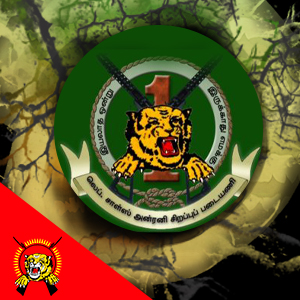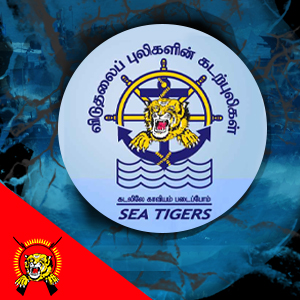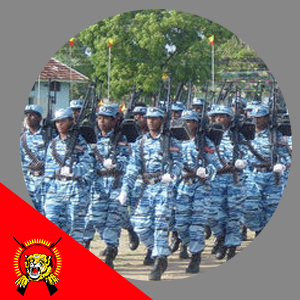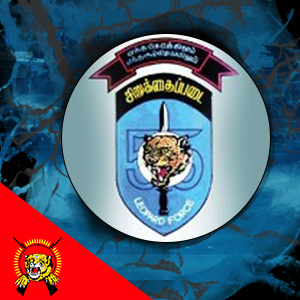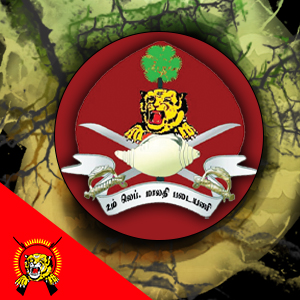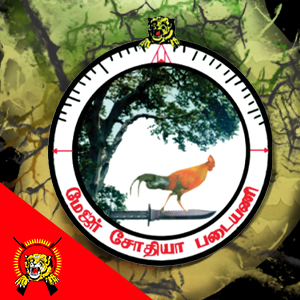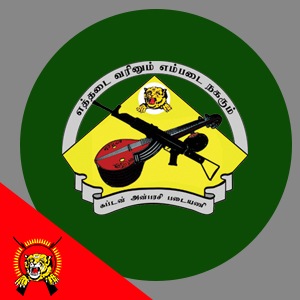“புதிய மூச்சாய்ப் பிறந்ந்தோம் புதிய வரலாற்றைப் படைப்போம்” உரக்க சொல்லும் லெப் . கேணல் குட்டிசிறி மோட்டார் படையணியினதும் ….
(ஆட்லறி மற்றும் எறிகணை மோட்டார்) படையணியிகளின் வளர்சிகளின் தன்மையை ஓரளவு அறிந்துகொள்ள வேன்றும் எனும் நோக்கத்திற்காக இந்தக் கட்டுரையின் முலம் எம் உறவுகளுக்கு ……
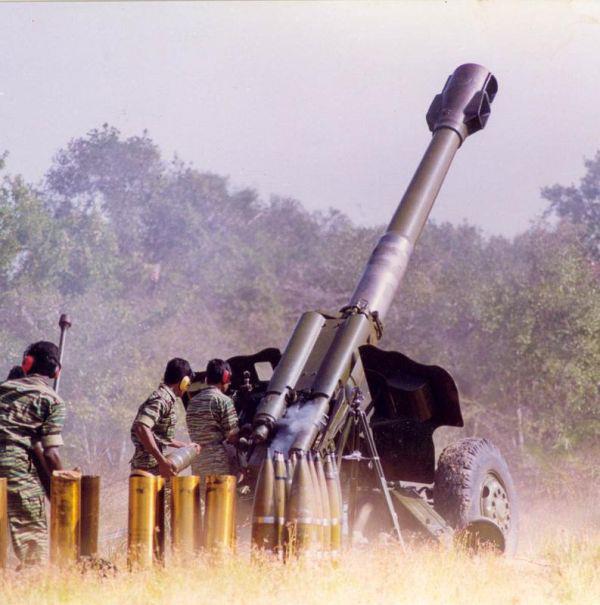
கடந்த 2000 ஆம் ஆண்டு மே 19 ஆம் திகதி இரவு உதயன் பத்திரிகை தடைசெய்யப்பட்டு அங்கிருந்த நாம் அனைவரும் அலுவலகத்தின் வாயிலுக்கு அழைத்துவரப்பட்டோம். பத்திரிகை நிறுவனத்தின் ஒருவாசல் விடாமல் சீல்வைத்த பொலிஸார், விடியும் வரை எம்மை வாசலிலுள்ள பத்திரிகையின் நூலகத்தில் தங்கியிருந்துவிட்டு விடிந்ததும் வீடு செல்லும்படி கூறிச்சென்றனர். தடை செய்யப்பட்ட நிறுவனத்துக்கு தமது பொலிஸ் அணியொன்றை பாதுகாப்புக்கு விட்டுச்சென்றனர்.
அவ்வாறு பாதுகாப்புக்கு நின்ற பொலிஸ் உத்தியோகத்தர் ஒருவருடன் விடியும் வரை நேரம் போவதற்கு கதைத்துக்கொண்டிருக்கையில் பதவி வழியாகவும் பணி ரீதியாகவும் அவர் தான் சார்ந்த படைக்கு விசுவாசமாக இருந்த போதும் தமிழர்களின் போராட்டம் குறித்த சரியான மதிப்பீடும் விடுதலைப் புலிகளின் போர்த்திறன் குறித்தும் செறிந்த வீரம் குறித்த வியப்பும் அவரிடம் காணப்பட்டதை உணரக்கூடியதாக இருந்தது. அவ்வாறு பேசிக்கொணடிருக்கையில் விடுதலைப் புலிகளின் தாக்குதல் திறன்கள் பற்றி கதைத்துவிட்டு ஆட்லறி ஏவுதிறன் பற்றி கூறினார்.
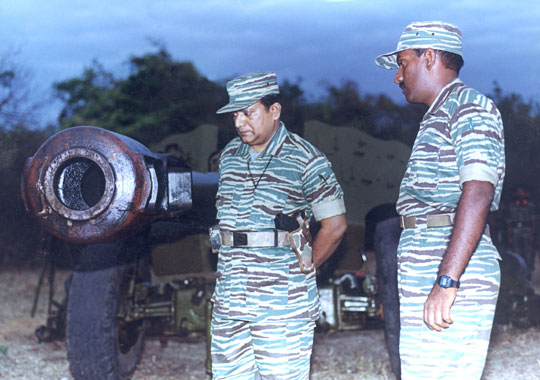
எங்கட ஆக்கள் சண்டையெண்டு வந்தவுடன வகை தொகையா ஆயுதங்களை பாவிக்கிறதில மன்னர்கள். குடுக்கிறத அப்படியே பொழிஞ்சு தள்ளுவினம். அது எங்க விழுகுது எத்தனை விழுகுது எண்டெல்லாம் கணக்கில்லை. புலிக்கெதிரா அடிக்கிறம் எண்டதில அவயளுக்கு ஒரு ஆத்ம திருப்தி. அவ்வளவுதான். ஆனால் புலி அடிச்சுதெண்டா அப்பிடியில்லை. உதாரணமா அவங்கள் ஒரு முகாமுக்கு ஆட்லறி அடிச்சா அளந்து அடிப்பாங்கள். ஒரு அடி வாசல் காப்பரணில விழும். மற்ற அடி முகாமிண்ட அலுவலகத்தில விழும். இன்னொரு அடி முகாமுக்குள்ள இருக்கிற சமயலறையில விழும். அவ்வாளவு தூரம் புலனாய்வு தகவல்களை சேகரிச்சு அதுக்கு ஏத்த மாதிரித்தான் அடிப்பாங்கள். எங்கட ஆக்கள் சுதாரிக்கிறத்துக்குள்ள அடி முடிஞ்சு எங்கடையில அரவாசிப்பேர் முடிஞ்சிருப்பினம்” என்று கண்களில் ஆச்சரியம் வழிய அதே நேரம் தமது படையினரின் நிலை குறித்து ஏளனத்துடன் பேசினார்.
படையினருக்கு சிம்ம சொப்பனமாக இருக்கும் புலிகளின் ஆட்லறி ஏவுதிறன் இன்று களத்தில் என்ன ஆட்டம் காட்டுகிறது என்று இதில் விரிவாக சொல்லத்தேவையில்லை. அவ்வப்போது சமர்க்களங்களில் சாதனைகளை படைத்து வந்த புலிகளின் ஆட்லறிகள் இன்று தமிழீழத்தை புலிகள் மறைமுகமாக கட்டுப்பாட்டுக்குள் வைத்திருக்கிறார்கள் என்ற இராணுவ ரீதியான உண்மைக்கு வலுச்சேர்த்திருக்கிறது. வடக்கில் பலாலியும் கிழக்கில் திருகோணமலை படைத்தளமும் புலிகளின் ஆட்லறி எல்லைக்குள் இருக்கும்வரை வடக்கு-கிழக்கில் சிறிலங்காப் படையினரின் இருப்பு என்பது ஒப்புக்கு சப்பாணி என்ற கதைதான். விடுதலைப் புலிகளோ தமது செயற்றிறனை களநிலைக்கேற்ப கனகச்சிதமான முன்னெடுத்து வருகிறார்கள்.
பல நாடுகளினதும் பயிற்சி பெற்ற சிறிலங்கா இராணுவத்தின் சிறப்புப் படைகளை எதிர்கொள்ளும் புலிகளின் இராணுவ வளர்ச்சி என்பது மாவிலாறில் ஆமி அடித்தவுடன் திருப்பி அடித்ததில் வந்ததோ அல்லது தென்னிலங்கையில்ல கூவுவதை போல புரிந்துணர்வு ஒப்பந்தம் கைச்சாத்தான பின்னர் கிடைக்கப்பெற்ற இடைக்கால யுத்த ஓய்வில் பெற்றுக்கொண்டதோ அல்ல. அது வீரவரலாறு. எதிலும் தீராத முயற்சி. கிடைக்கும் வளங்களை வைத்து உச்சப்பயனை பெறும் அதீத உழைப்பு. வரைவிலக்கணங்களுக்குள் அடங்கும் சம்பிரதாய சாதனைகளை உடைத்தெறியும் நுட்பம் எனப்பல.
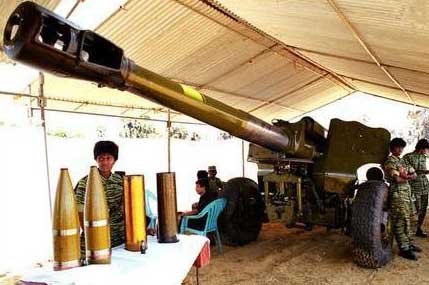
உதாரணத்துக்கு இன்று எதிரியின் கண்ணில் வரலை விட்டு ஆட்டும் புலிகளின் ஆட்லறி பலத்தை எடுத்துக்கொண்டால் அதன் மூலம் இன்று அவர்கள் அடைந்துள்ள வெற்றி என்பது பிரமிக்கத்தக்கது.
1996 இல் முல்லைத்தீவு தாக்குதலில் சிறிலங்கா இராணுவத்திடமிருந்து 900 செல்களுடன் சேர்த்து கைப்பற்றிய இரண்டு 122 மில்லி மீற்றர் ரக ஆட்லறிகள்தான் விடுதலைப் புலிகளுக்கு கிடைத்த முதலாவது ஆட்லறி. அதன் பின்னர் மட்டக்களப்பு புலுக்குனாவையில் அதே ஆண்டு பிற்பகுதியில் 85 மில்லி மீற்றர் ரக ஆட்லறி ஒன்று கைப்பற்றப்பட்டது. எதிரியிடம் கைப்பற்றப்பட்ட இந்த மூன்று ஆட்லறிகளையும் வைத்துக்கொண்டு அதன் ஏவுதிறன் பற்றி கற்று அதனை எவ்வாறு களத்தில் பயன்படுத்துவது. எவ்வளவு சிக்கனமாக அதனை பயன்படுத்துவது போன்ற விடயங்களை தெரிந்து 1997 இல் வவுனியா சிறிலங்கா இராணுவ முகாம் மீதான தாக்குதல் ஒன்றில் முதன் முதலாக ஆட்லறியை பயன்படுத்தினர். அப்போதான் புலிகளிடம் ஆட்லறி இருக்கும் விடயம் படையினருக்கும் வெளிஉலகுக்கும் தெரியவந்தது.
ஏதிரியிடம் கைப்பற்றிய இந்த மூன்று ஆட்லறிகள் மட்டும்தான்; வன்னிக்குள் ஆழக்கால் பதித்த சிறிலங்கா இராணுவத்தின் ஜெயசிக்குறு இராணுவ நடவடிக்கைக்கு எதிராக பயன்படுத்தப்பட்டன என்பதையும் ஏ-9 பாதையை கைப்பற்ற வந்த இராணுவம் அதே பாதையால் பின்வாங்கி ஓடுவதற்கு புலிகளின் இந்த ஆட்லறிகளும்தான் கணிசமான பங்குவகித்தன என்றால் உலகின் எந்த இராணுவ விமர்சகரும் நம்பமாட்டார்கள். ஆனால் புலிகள் அதனை செய்தார்கள். செய்து காட்டினார்கள்.
இதன்பின்னர் 2000 ஆம் ஆண்டு புலிகளின் வீரத்துக்கு வாகை சூடிய ஆனையிறவு பெருந்தள மீட்பு சமரின்போது அங்கிருந்து 122 மில்லி மீற்றர் ரக ஆட்லறிகள் இரண்டும் 152 மில்லி மீற்றர் ரக ஆட்லறிகள் மூன்றும் புலிகளால் கைப்பற்றப்பட்டன. ஆனையிறவு தாக்குதலின்போது பின்வாங்கிச்சென்ற படையினரின் ஒரு அணி 122 மில்லி மீற்றர் ஆட்லறி ஒன்றை வாகனத்தில் கட்டியிழுத்துக்கொண்டு கிளாலி கடற்கரை வீதியால் ஓடியது. இதைக்கண்ட புலிகளின் விக்டர் கவச எதிர்ப்பு அணி ஒன்று அவர்களை கலைத்துச்சென்று கட்டியிழுத்துச்சென்ற வாகனத்தை தாக்கி கூடச்சென்ற படையினர் மீது தாக்குதல் நடத்தி அந்த ஆட்லறியை மீட்டனர்.
இதனுடன் புலிகளின் ஆட்லறி வலு மடங்குகாகியது. சாதரணமாக பல ஆட்லறிகளை களத்தில் வைத்து சாதிக்கக்கூடிய சாதனையை ஒரு ஆட்லறியை வைத்து நிலைநாட்டக்கூடிய திறனை புலிகள் பெற்றுக்கொண்டனர். இதில் சிறிலங்காப் படையினர் புலிகளை நெருங்கவே முடியவில்லை. உதாரணமாக ஜெயசிக்குறு இராணுவ நடவடிக்கையின்போது படையினர் ஏவிய ஆட்லறிகள் அரைவாசிக்கு மேல் இலக்குத்தவறி வயல்களுக்குள்ளும் விவசாய நிலங்களுக்கும் விழுந்து அப்பாவி மக்களின் உயிர்களை காவுகொண்டனவே தவிர புலிகளின் நிலைகளை தாக்கியவை மிகச்சொற்பமே.
ஓயாத அலைகள் – 3 நடவடிக்கை புலிகளின் ஆட்லறி வலுவின் ஒரு புதிய பாய்ச்சல் என்று கூறலாம். ஓயாத அலைகள் – 3 நடவடிக்கையில் நேரடி மோதல்கள் அதிகம் இடம்பெறாததால் புலிகளின் ஆட்லறியே படையினருக்கு பாரிய இழப்பை ஏற்படுத்தியது. படையினரின் வௌ;வேறு நிலைகளை ஏக காலத்தில் ஆட்லறிகளை கொண்டு தாக்கும் புதிய வலுவை ஓயாத அலைகள் – 3 நடவடிக்கையின்போது புலிகள் வெளிப்படுத்தியிருந்தனர். ஒரே பெயரிலான படை நடவடிக்கையென்றாலும் அதன் தாக்குதல் எங்கெங்கு நடைபெறுகிறதோ அங்கெல்லாம் ஆட்லறி கொண்டு தாக்கும் அந்த திறனை புலிகளிடம் எதிர்நோக்கிய படையினர் சிக்கி திணறுண்டு போயினர். (கனகராயன் குளத்தில் ஆட்லறிகொண்டு புலிகள் நடத்திய சங்காரத்தில் படையினர் அடைந்த இழப்பு ஓயாத அலைகள் – 3 நடவடிக்கையில் கோடிட்டுக்காட்டப்படவேண்டியது.)
இதன்பின்னர் புலிகளின் ஆட்லறி வலு என்பது எதிரியின் கற்பனைக்கு எட்டாத அளவு வளர்ச்சி கண்டது. தீச்சுவாலை படை நடவடிக்கையின்போது நேரடிச்சண்டைகள் பெரும்பாலானவையான போதும் களமுனைப் போராளிகளுக்கு புலிகளின் ஆட்லறி அணிகள் பாரிய ஒத்துழைப்பு வழங்கின. எதிரியின் முகாம் தாக்கப்படும்போது அதற்கு உதவி வழங்கும் அணிமீதான தாக்குதல், எதிரிக்கு ஆயுத மற்றும் ஆளணி விநியோகங்கள் மீதும் மற்றும் அவற்றின் பாதைகள் மீதானதுமான தாக்குதல்கள் எதிரியின் இனங்காணப்பட்ட இலக்குகளை தாக்கி அவனது கவனத்தை வேறு திசை திருப்பும் தந்திரோபாய தாக்குதல்கள், களமுனையில் முன்னேறும் படைகளுக்கு வழியேற்படுத்தி கொடுப்பதற்கான குறுந்தூரத்தாக்குதல்கள் என ஆட்லறிகள் யுத்த களத்தில் பல்வேறு விதமாக பயன்படுத்தப்படுகின்றன.
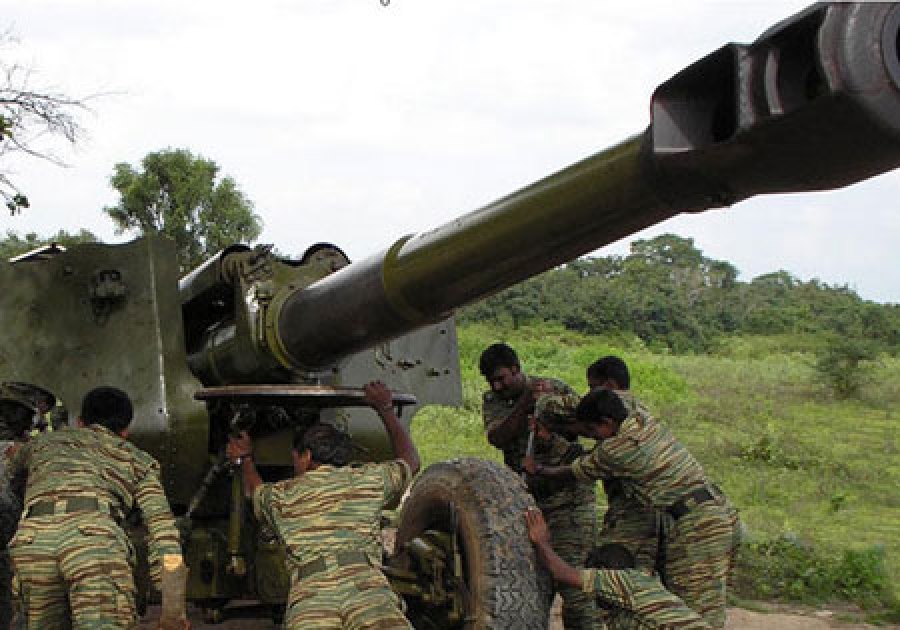
புலிகள் தற்போது பலாலி படைத்தளத்தின் மீதான தாக்குதலுக்கு பயன்படுத்தவது 130 மில்லி மீற்றர் ரக ஆட்லறி என்று படைத்தரப்பே தெரிவித்திருக்கிறது. ஆனால் இது படையினரிடம் புலிகளால் கைப்பற்றப்பட்டதல்ல. ஆகவே புலிகளின் ஆட்லறி பலம் எவ்வளவு தூரம் செறிவடைந்துள்ளது. செறிவடைந்திருக்கக்கூடும் என்பதற்கு இது ஒரு நல்ல உதாரணம். கிட்டு படையணி மற்றும் குட்டி சிறீ படையணி ஆகியவை புலிகளின் ஆட்லறிக்கென தனியாக பயிற்றப்பட்ட பிரத்தியேக படையணிகள் ஆகும்.
ஆட்லறிகளுக்கான பொதுப்பயன்பாடு என்ற வரைமுறையிருப்பினும் புலிகள் அதில் வித்தியாசமான- விதிவிலக்கான- பயன்பாடுகளுக்குள்ளேயே தம்மை தயார்படுத்தி பயிற்சிகளை பெற்றுவருகின்றனர். சிறிலங்காப் படையினரை பொறுத்த வரை ஆட்லறிக்கென தனியான தளம் அமைத்து அதற்கென தனியான அணியை அமர்த்தி வகை-தொகையாக புலிகளுக்கு எதிராக தாக்குவதற்கென உத்தரவுகள் வழங்கப்படுகின்றன. அவர்கள் ஆட்லறியை சூழ இருந்து ஐயர் யாகம் வளர்ப்பது போல இருந்து ஷெல்களை குழாயில் போட்டு அடித்துக்கொண்டிருப்பர். ஆனால் புலிகளை பொறுத்தவரை இந்த இருப்பு அவர்களுக்கு பொருந்தாது. ஏனெனில் புலிகளின் ஆட்லறி தாக்குதலை வைத்து அது எங்கிருந்து ஏவப்படுகிறத என்பதை கணித்து அந்தத்தளத்துக்கு வான் வழியாக சென்று தாக்குதல் நடத்துவது சிறிலங்கா படையினரின் வழக்கம். இதனால் படையினரின் வான் தாக்குதலிலிருந்து ஆட்லறியை பாதுகாக்க வேண்டியதும் ஆட்லறி தாக்குதல் பயிற்சியில் புலிகளுக்கு அங்கமாகிவிடுகிறது.
இன்று பலாலிக்கு எவப்படும் புலிகளின் ஆட்லறி பூநகரியில் உள்ளது என்றும் கல்முனையில் உள்ளது என்றும் படையினர் அறிக்கை விட்டு விட்டு வான் வழியாக தாக்குதல் நடத்துகிறார்களே தவிர புலிகளின் ஆட்;லறிக்கு அதனால் எதுவும் நடந்ததாக தெரியவில்லை. ஆட்லறியின் வீச்செல்லையின் சாத்தியக்கூறுகள் மற்றும் புவியியல் அமைப்பு ஆகியவற்றை நோக்கும்போது கல்முனைக்கும் பூநகரிக்கும் இடையில் வைத்துத்தான் புலிகள் ஆட்லறி தாக்குகதலை மேற்கொள்கிறார்கள் என்பது உண்மையாகிறது.
ஆனால் அந்தப்பிரதேசத்தினுள் படையினரின் வான் தாக்குதலுக்குள் சிக்காமல் அந்த ஆபத்தை எதிர்பார்த்தும் கூட அதற்கேற்ற முன் ஆயத்தங்களுடன் நின்று குடாநாட்டில் உள்ள 40 ஆயிரம் படையினருக்குமான வான் வழி விநியோகத்தை தடுக்கவல்ல தாக்குதலை தொலைவிலிருந்து ஆட்லறி உதவியுடன் தொடுத்துக்கொண்டுள்ளார்கள் என்றால் இதனை உலகின் எந்த இராணுவ வரையறைகளுக்குள் அடக்குவது?
தெய்வீகன் அவர்களின் ‘மாவிலாறில் தண்ணி கேட்ட படையினருக்கு குடாநாட்டில் தண்ணி காட்டும் புலிகள்’ எனும் 2oo6 ம் வருடக் கட்டுரையிலிருந்து….
“புலிகளின் தாகம் தமிழீழத் தாயகம்”


